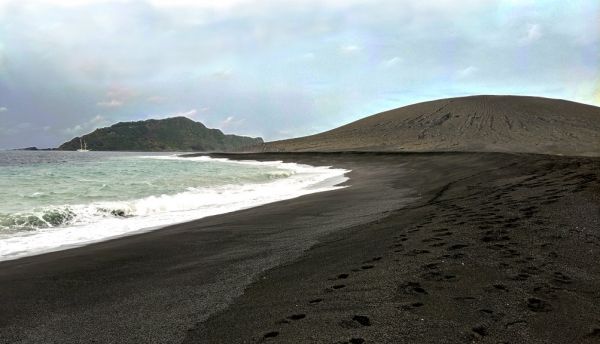What a week! Having just finished an expedition to Earth’s newest landmass, Hunga Tonga-Hunga Ha’apai (HTHH) in the Kingdom of Tonga a few days ago, I thought I’d write a few thoughts on this latest expedition to Earth’s newest landmass.
Shortly after the volcanic eruption that constructed this new island began in December 2014, we were alerted at NASA’s Goddard Space Flight Center, in Greenbelt, Maryland, and initiated collection of relevant satellite imagery. Closely following this over the next several months, we observed rapid erosion of the southern coast due to oceanic wave action, at one point breaching the crater wall and opening the crater lake to the sea. Based on observations to this point, we expected a relatively rapid and possibly complete disappearance of the new island, perhaps within months or at most a few years. But instead, the island has held on!
In mid-2018, with the island just over 3 1/2 years old, I was extremely fortunate to be invited to join a leg of the Sea Educational Association’s SEA Semester/SPICE (Sustainability in Polynesian Island Cultures and Ecosystems) program cruise through the southwest Pacific that passes conveniently close to HTHH. That exploratory visit, one year ago, was extremely valuable to let us get our feet wet (figuratively and literally) in understanding the island system from the ground, instead of solely from a satellite vantage point hundreds of miles in space. We made many useful observations, collected some good data, and gained a more practical human-scale understanding of the topography of the place (such as that the adjacent pre-existing islands, and their rocky shorelines, are almost fortress-like in their inaccessibility). We also saw things not accessible from space, such as the hundreds of nesting sooty terns, and details of the emergent vegetation.
Continue reading at NASA
Image via NASA


